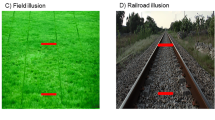Abstract
After preparing the way with comments on evanescent quantities and then Newton’s interpretation of his second law, this study of Proposition II (Book I)— Proposition II Every body that moves in some curved line described in a plane and, by a radius drawn to a point, either unmoving or moving uniformly forward with a rectilinear motion, describes areas around that point proportional to the times, is urged by a centripetal force tending toward that same point. —asks and answers the following questions: When does a version of Proposition II first appear in Newton’s work? What revisions bring that initial version to the final form in the 1726 Principia? What, exactly, does this proposition assert? In particular, what does Newton mean by the motion of a body “urged by a centripetal force”? Does it assert a true mathematical claim? If not, what revision makes it true? Does the demonstration of Proposition II persuade? Is it as convincing, for example, as the most convincing arguments of the Principia? If not, what revisions would make the demonstration more persuasive? What is the importance of Proposition II, to the physics of Book III and the mathematics of Book I?
Similar content being viewed by others
References
E.A. Andrews, A Copious and Critical Latin-English Lexicon, founded on the larger Latin-German lexicon of Dr. William Freund, with additions and corrections (London: Sampson Low, Son & Co., 1863).
I. Bernard Cohen, Newton’s Second Law and the Concept of Force in the Principia, in The Annus Mirabilis of Sir Isaac Newton 1666–1966 (Cambridge, Massachusetts: MIT Press, 1967), 143–185.
Bernard Cohen I.: Introduction to Newton’s Princpia. Harvard University Press, Cambridge, Massachusetts (1971)
Elisha Coles, An English Dictionary, explaining the very difficult terms that are used in divinity, husbandry, physick, phylosophy, law, navigation, mathematicks, and other arts and sciences... (London: Printed for Peter Parker, 1684).
Elisha Coles, A Dictionary, English-Latin and Latin-English, containing all things necessary for the translating of either language into the other ... (London: Printed by John Richardson for Peter Parker, Thomas Guy, Henry Mortlack, Moses Pitt, and William Leak, 1679).
Galileo Galilei, Dialogue on the Great World Systems in the Salusbury translation, revised by Giorgio de Santillana (Chicago: The University of Chicago Press, 1953).
Niccolò Guicciardini, Reading the Principia: The Debate on Newton’s Mathematical Methods for Natural Philosophy from 1687 to 1736 (Cambridge: Cambridge University Press, 1999).
A.R. Hall, L. Tilling, H.W. Turnbull, and J.P. Scott, editors, The Correspondence of Isaac Newton (Cambridge: Cambridge University Press, 1959–1977).
John Herivel, The Background to Newton’s Principia: A Study of Newton’s Dynamical Researches in the Years 1664–84 (Oxford: Clarendon Press, 1965).
Isaac Newton, Sir Isaac Newton’s Mathematical Principles of Natural Philosophy and His System of the World, translated into English by Andrew Motte in 1729, the translations revised by Florian Cajori (Berkeley, California: University of California Press, 1947).
Isaac Newton, Isaac Newton’s Philosophiae Naturalis Principia Mathematica, Third Edition (1726) with variant readings, Volume I, edited by Alexander Koyré and I. Bernard Cohen with the assistance of Anne Whitman (Cambridge, Massachusetts: Harvard University Press, 1972).
Isaac Newton, The Principia: Mathematical Principles of Natural Philosophy, translated by I. Bernard Cohen and Anne Whitman, preceded by a Guide to Newton’s Principia by I. Bernard Cohen (Berkeley, California: University of California Press, 1999).
Isaac Newton, The Preliminary Manuscripts for Isaac Newton’s 1687 Principia, 1684–1685, facsimilies of the original autographs, now in Cambridge University Library, with an introduction by D.T. Whiteside (Cambridge: Cambridge University Press, 1989).
Isaac Newton, The Mathematical Papers of Isaac Newton, Volumes I–VIII, edited by D.T. Whiteside (Cambridge: Cambridge University Press, 1967–1981).
Bruce Pourciau, On Newton’s Proof That Inverse-Square Orbits Must be Conics, Annals of Science 48 (1991), 159–172.
Pourciau Bruce: Newton and the Notion of Limit. Historia Mathematica 28, 18–30 (2001)
Pourciau Bruce: Newton’s Argument for Proposition 1 of the Principia. Archive for History of Exact Sciences 57, 267–311 (2003)
Pourciau Bruce.: The Importance of Being Equivalent: Newton’s Two Models of One-body Motion. Archive for History of Exact Sciences 58, 283–321 (2004)
Pourciau Bruce.: Newton’s Interpretation of Newton’s Second Law. Archive for History of Exact Sciences 60, 157–207 (2006)
Pourciau Bruce.: Force, Deflection, and Time: Proposition 6 of Newton’s Principia. Historia Mathematica 34, 140–172 (2007)
George E. Smith, From the Phenomenon of the Ellipse to an Inverse-Square Force: Why Not?, in Reading Natural Philosophy: Essays in the History and Philosophy of Science and Mathematics, edited by David B. Malament and Abner Shimony (Peru, Illinois: Open Court Publishing Company, 2002).
Whiteside D.T.: The Prehistory of the Principia from 1664 to 1686. Notes and records of the Royal Society London 45, 11–61 (1991)
Author information
Authors and Affiliations
Corresponding author
Additional information
Communicated by G.E. Smith.
Rights and permissions
About this article
Cite this article
Pourciau, B. Proposition II (Book I) of Newton’s Principia . Arch. Hist. Exact Sci. 63, 129–167 (2009). https://doi.org/10.1007/s00407-008-0033-y
Received:
Published:
Issue Date:
DOI: https://doi.org/10.1007/s00407-008-0033-y




